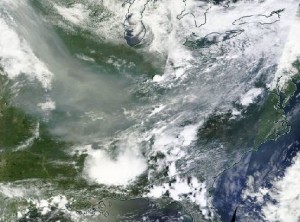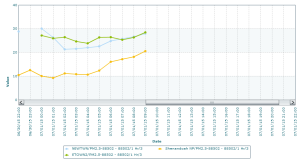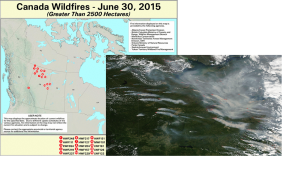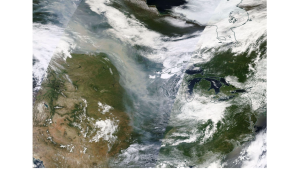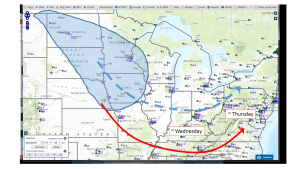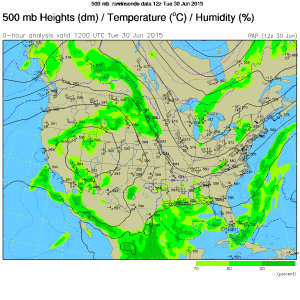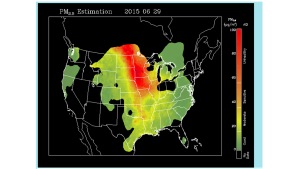Medium Range Air Quality Outlook Mid-Atlantic Region
Issued: Saturday, June 27, 2015
Valid: June 28-July 2, 2015 (Sunday – Thursday)
Summary:
Cooler than normal through Monday, then a warming trend that will push air quality into the Moderate by Tuesday. Moderate air quality to continue Wednesday with an uncertain forecast for Thursday. As we reach late June, with day lengths on the order of 15 hours and a high sun angle, any sunny day poses a risk for high ozone. The highest ozone concentrations are expected Tuesday and Wednesday with clouds likely to arrive Thursday.
For the full Medium Range forecast discussion, please visit the PSAQFO forecasting blog at: http://psaqfo.psu.edu/blog
Discussion:
Good agreement between the forecast models (NAM, ECMWF and GFS) through Wednesday, with much less certainty for Thursday. The main difference between the models is the depth of the eastern US trough on Wednesday. This leads to differences in the possibility of precipitation late Wednesday and into Thursday. The GFS has the stronger trough and thus more precipitation. This discussion follows an average of the GFS and ECMWF after Tuesday.
Low pressure over the mid-Atlantic is bringing heavy rain today. The rain will end from SW to NE on Sunday with a lingering chance of rain until mid-morning in the northern mid-Atlantic. The axis of the trough, and the closed low embedded in it, will reach NW PA by early Sunday and then move into southern QC on Monday. The long wave eastern US trough will be reinforced by a strengthening short wave that will reach OH by Tuesday morning and then move off to QC by Thursday. The GFS is stronger with this trough as noted above.
As low pressure rotates away to the NE on Sunday, most of the mid-Atlantic will be in a “dry slot” that will lead to mostly sunny skies. With the upper level trough in place, cool air will keep temperatures in the 70’s F with falling dew points and strong westerly winds. This will keep air quality in the Good range Sunday. Similar conditions on Monday in terms of temperature and humidity but winds will decrease and shift to the SW. This will allow ozone and fine particle concentrations to increase but we agree with the numerical air quality models that peak concentrations will remain in the upper Good range.
Temperatures will warm on Tuesday with steady SW flow. The NAM is an outlier with respect to temperatures with a maximum temperature near 90 F on Tuesday. We expect that mid-80’s F will be more likely. In any event, sunny skies, along Corridor flow and a long late June day length will allow ozone and particles to reach the Moderate range with ozone as the leading pollutant.
The next cold front will be well to the west on Wednesday which will allow a continuation of Moderate air quality. Frontal passage is expected early Thursday although, as we get into summer, fronts tend to move slower than expected for forecasts out 4-5 days. There is also little consensus with respect to rain chances from the models. The highest likelihood of rain Thursday is in the southern mid-Atlantic. Good to low Moderate air quality is expected Thursday.
-Ryan


